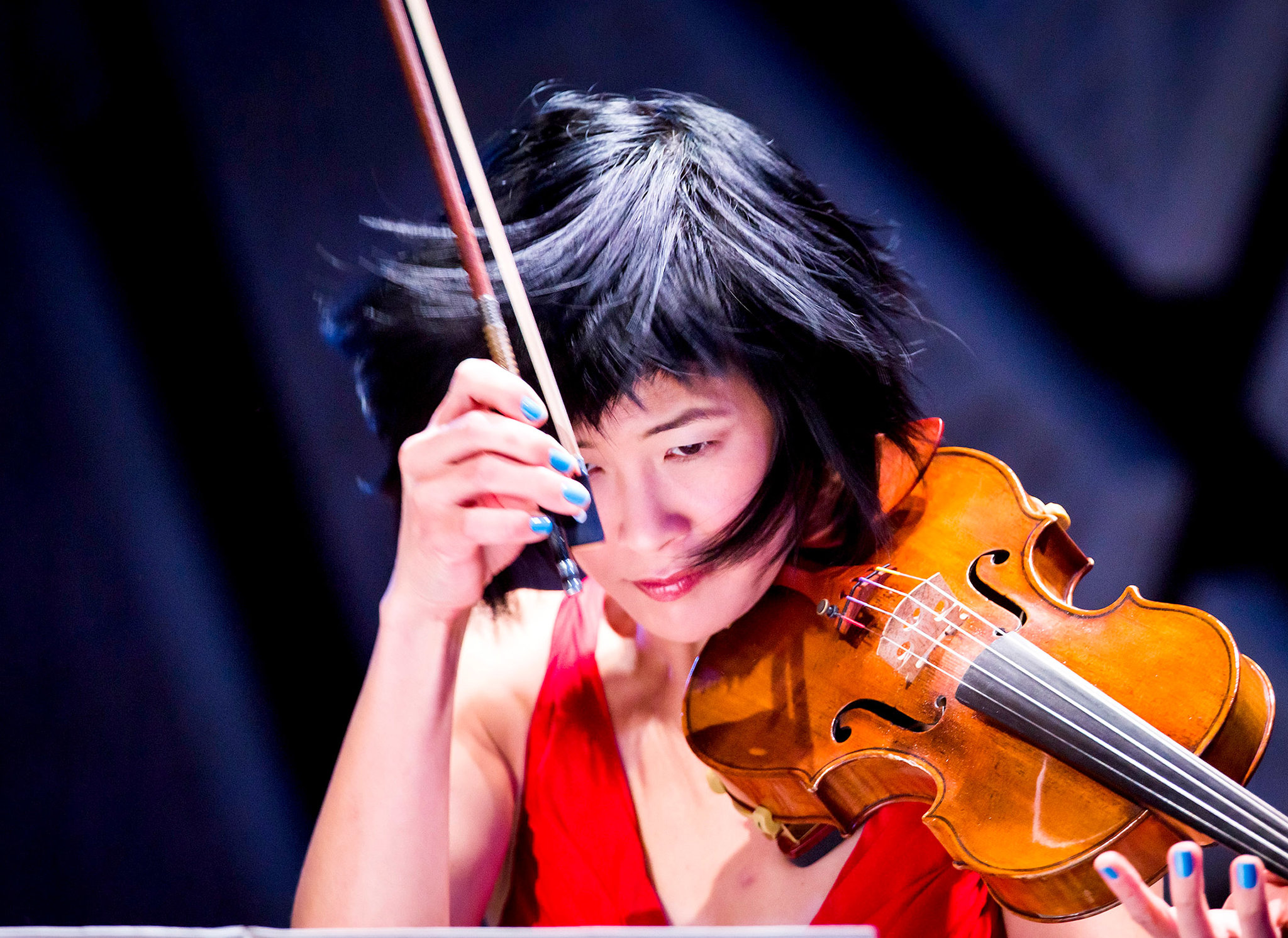The New York Times
By Corinna da Fonseca-Wollheim
June 1, 2016
original
link
Review: Jennifer Koh Asks 32 Musicians to Respond to Paganini

Jennifer Koh performing at National Sawdust on Tuesday. The concert, “Shared Madness,” was presented as part of the New York Philharmonic’s NY Phil Biennial. Credit Chris Lee
When Paganini published his 24 Caprices for solo violin in 1820, the technical limits of virtuosity were in flux. But its purpose in music was well defined: Difficulty was central as a measure of skill, of course, but also to give a sense of showmanship, mixed with an acrobatic element of danger.
Two centuries later, the role of virtuosity in music has become muddled. Difficulty is now as likely to push away audiences as to draw them in. Technology makes it possible for musicians to produce complex sounds with minimal physical effort. And when the technique of playing a particular instrument is extended, it’s often in the direction of seemingly naïve gestures — like bowing the wooden shoulder of the violin — that result in the faintest of sounds.
So when the violinist Jennifer Koh commissioned 32 short works for solo violin as responses to Paganini, from as many composers, the project, titled “Shared Madness,” seemed like a good test of where virtuosity stands today. But her performance of 16 of these new pieces at National Sawdust on Tuesday showed just how much disagreement there is among composers, not just over what constitutes virtuosity, but also about whether to use it at all.
The concert was part of the New York Philharmonic’s NY Phil Biennial, which operates under the slogan “Let’s Play.” But given the opportunity to channel their inner virtuoso, many composers seemed to say, rather, “I don’t play that way.” David Lang’s “low resolution,” for instance, consisted of halting notes uttered in quadruple-piano whispers. Samuel Adams’s “for jenny” spaced out tiny gossamer notes over a delicate electronic track. Michael Gordon’s “kwerk” noodled along amiably.
A larger group of composers, among them Lisa Bielawa, Noam Sivan, Eric Nathan and Anthony Cheung, put Ms. Koh through her paces with athletic works that employed many of the challenges Paganini specialized in: extreme jumps in register, double- and triple-stopped notes, trills, blurs of fast runs and arpeggios. These pieces spoke in the musical language of our time. But the demands they made on the violinist rarely seemed to go beyond standard — albeit advanced — technique.
By contrast, Zosha Di Castri’s “Patina” wove contemporary preoccupations — with microtonal shadings and the relation of noise to music — in a score tense with wild fluctuations in temperament. Jean-Baptiste Barrière was the only composer on Tuesday to exploit electronic sampling and processing to create a richly textured world of sounds in which echoes of Paganini’s 24th Caprice flitted in and out of earshot.
If traditional virtuosity contains an element of surprise, Christopher Rountree’s “because I left it there” delivered it with a deceptively simple, folk-like score that Ms. Koh played while reciting a quirky, wistful monologue about an offering of frozen yogurt left to melt unappreciated on a front porch.
Copyright © The New York Times
© Jennifer Koh, All Rights Reserved. Photography by Juergen Frank. Site by ycArt design studio